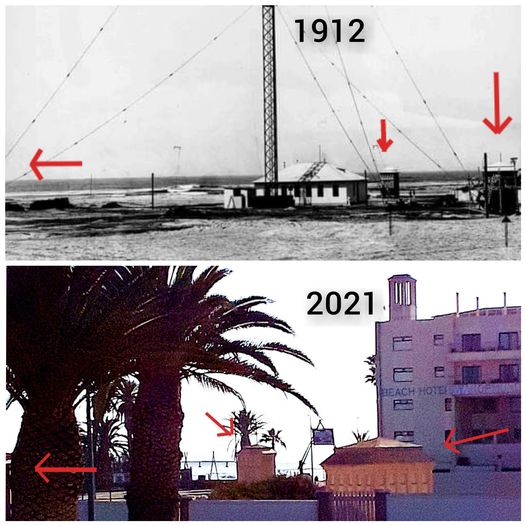 |
 |
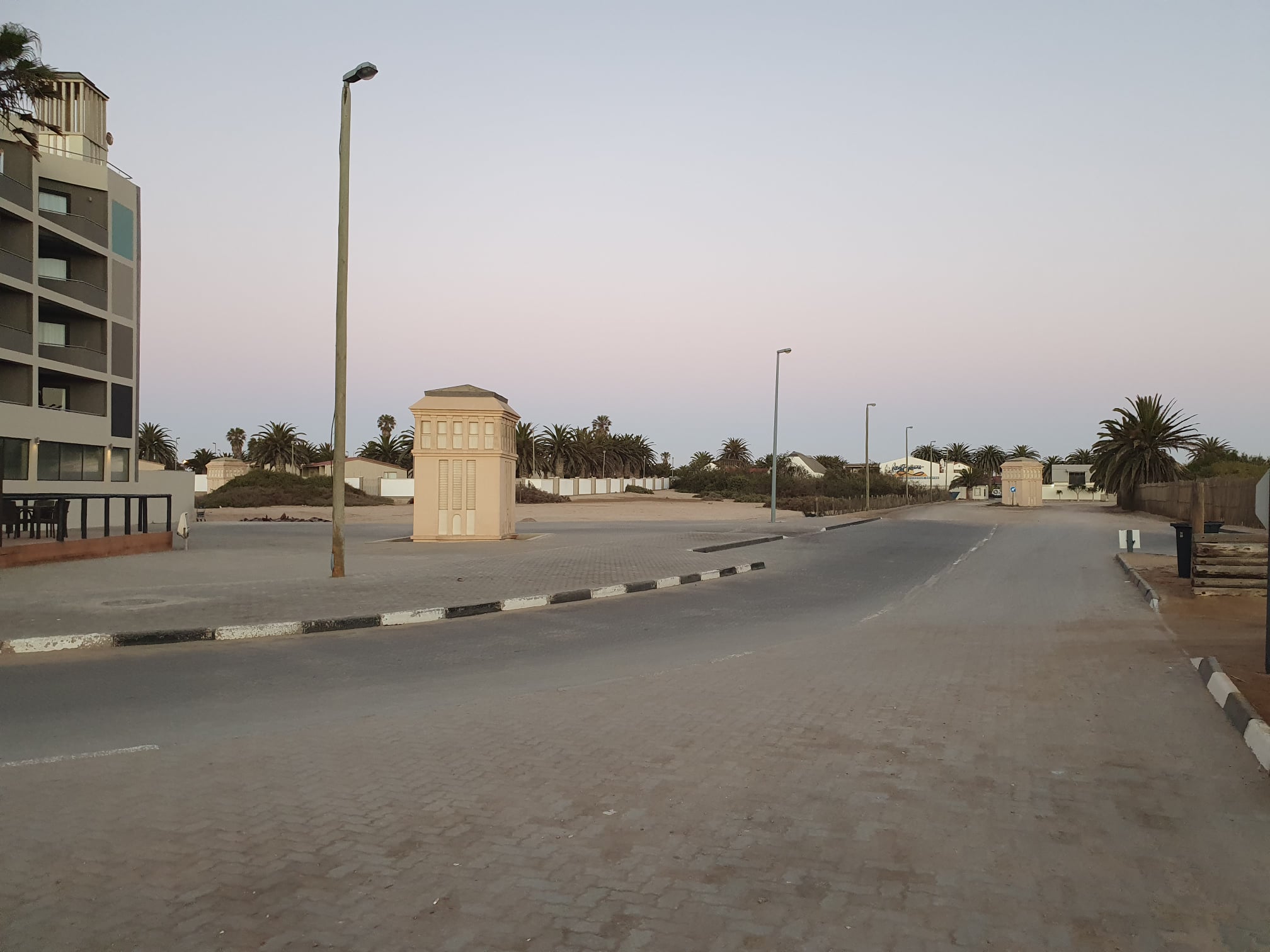 |
|
Anchor Towers in Swakopmund ßÊÎÐÍÛÅ ÁÀØÍÈ ÑÂÀÊÎÏÌÓÍÄ ÍÀÌÈÁÈß ERONGO REGION NAMIBIA |
Anchor towers in Swakopmund
Some Swakopmund visitors were often wondered what these little guard towers
were without windows and without doors. Were they a little guard towers for
dwarfs or miniature soldiers? Even locals seemed to not know what these
structures are or what purpose they served.
However, it turns out that during 1912 German engineer Friedrich 'Fritz'
Kramer (who lived in the Kramer House - now known as Scultetus Haus - in what
is now known as Kramersdorf) helped built an 85 m tall radio communications
tower for Deutsche Telefunken.
 |
 |
 |
The tower had a reach of 1100 km during the day and 1700 km
during the night and was situated at the Swakop River mouth. The tower served
for radio communication with Germany.
Only the top parts of the three anchors, which were buried 2.5 metres deep
remain visible to this day. Above the anchors the three anchor towers were
erected. They are 6 metres high and filled with sand on the inside.
YouTube video: tour to Mondesa | Township singers Vocal Galore | Swakopmund
On 14 September 1914 the tower, together with the anchor towers and the house of Paul Wlotzka were unsuccessfully bombarded with 17 rounds from the English "Armadale Castle", a passenger steamship built in 1903 and which was requisitioned as an armed merchant cruiser in the Royal Navy. Wlotzkas House sustained minor damage.
However, the tower was already decommissioned on 13 August 1914 and all instruments brought inland. After the bombardment the tower was brought down by tower personnel who cut two of the anchor cables.
At the end of the 70s the towers were restored and placed under Monument Protection.
YouTube video of Swakopmund Jetty:
The picture from 2021 was taken within the Municipal Bungalows and the third tower is off to the left.
A number of radio stations in German South West Africa (present day Namibia) that enabled Germans to communicate between their colony, German South West Africa and the German Empire. They also used radio to communicate within the German South West Africa territory and with German boats at sea. The stations utilized spark-gap transmitters.
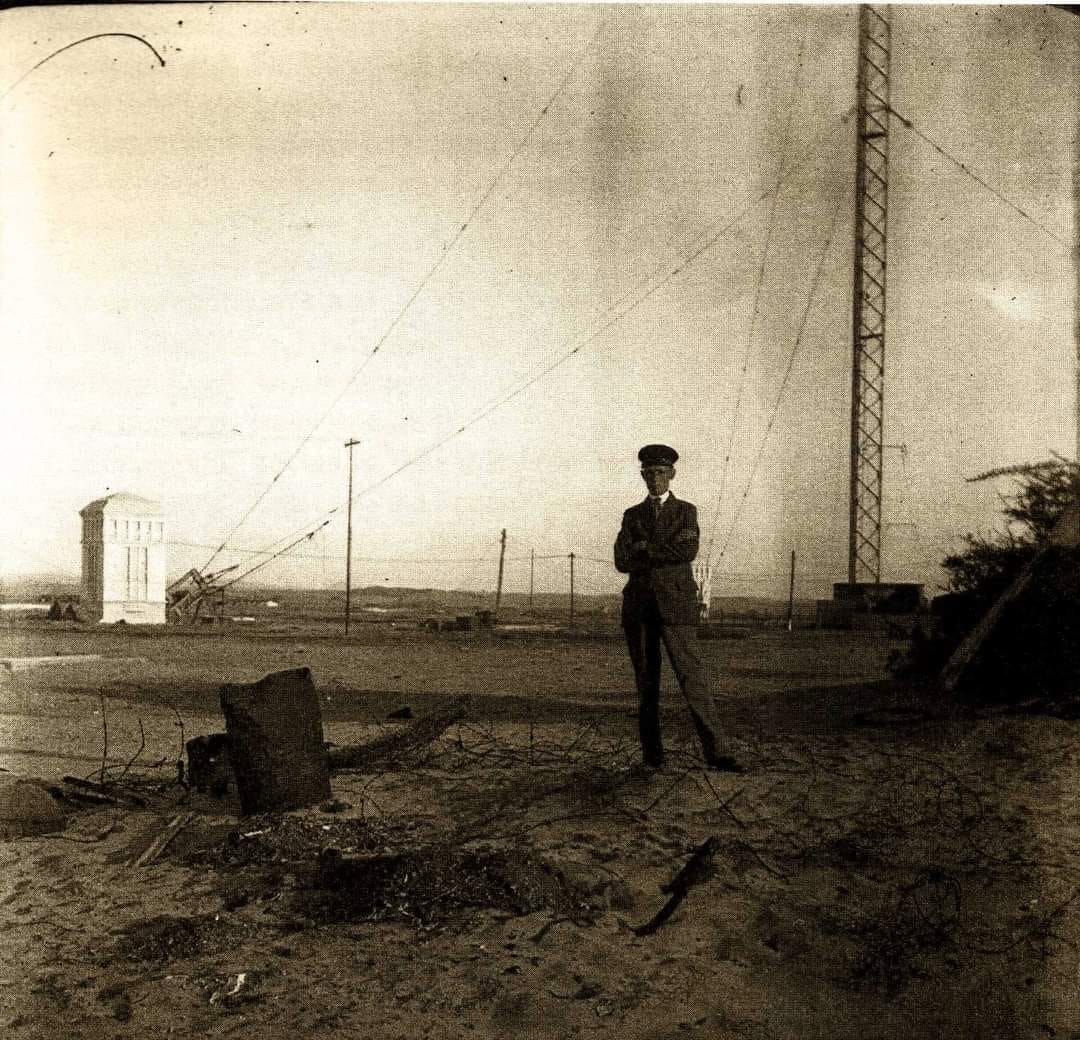 |
 |
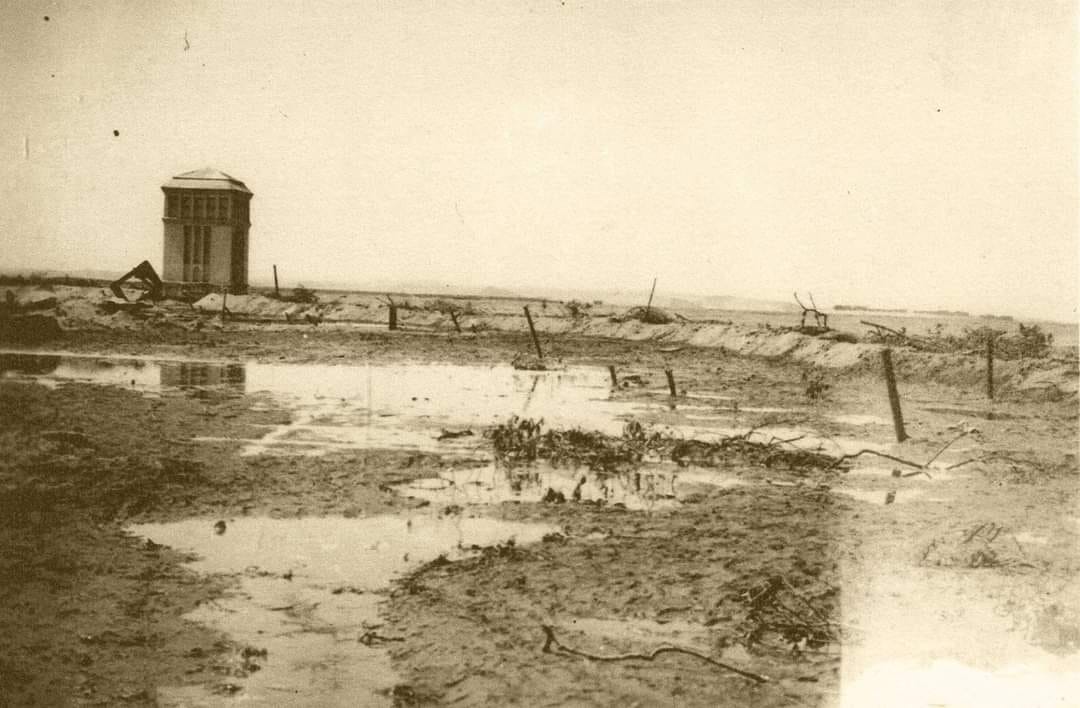 |
The introduction of wireless telegraphy was a significant step for communication between GSWA and the Germany in Europe. The news about the start of World War I reached German South West Africa on 2 August 1914 via radio telegraphy. The information was transmitted from the Nauen transmitter station via a relay station in Kamina and Lomé in Togo to the radio station in Windhoek.
YouTube video of tour to Rossing uranium mine from Swakopmund:
Fixed radio stations
The Germans installed three fixed radio stations: one in the capital Windhoek,
one in Swakopmund and one in Lüderitzbucht
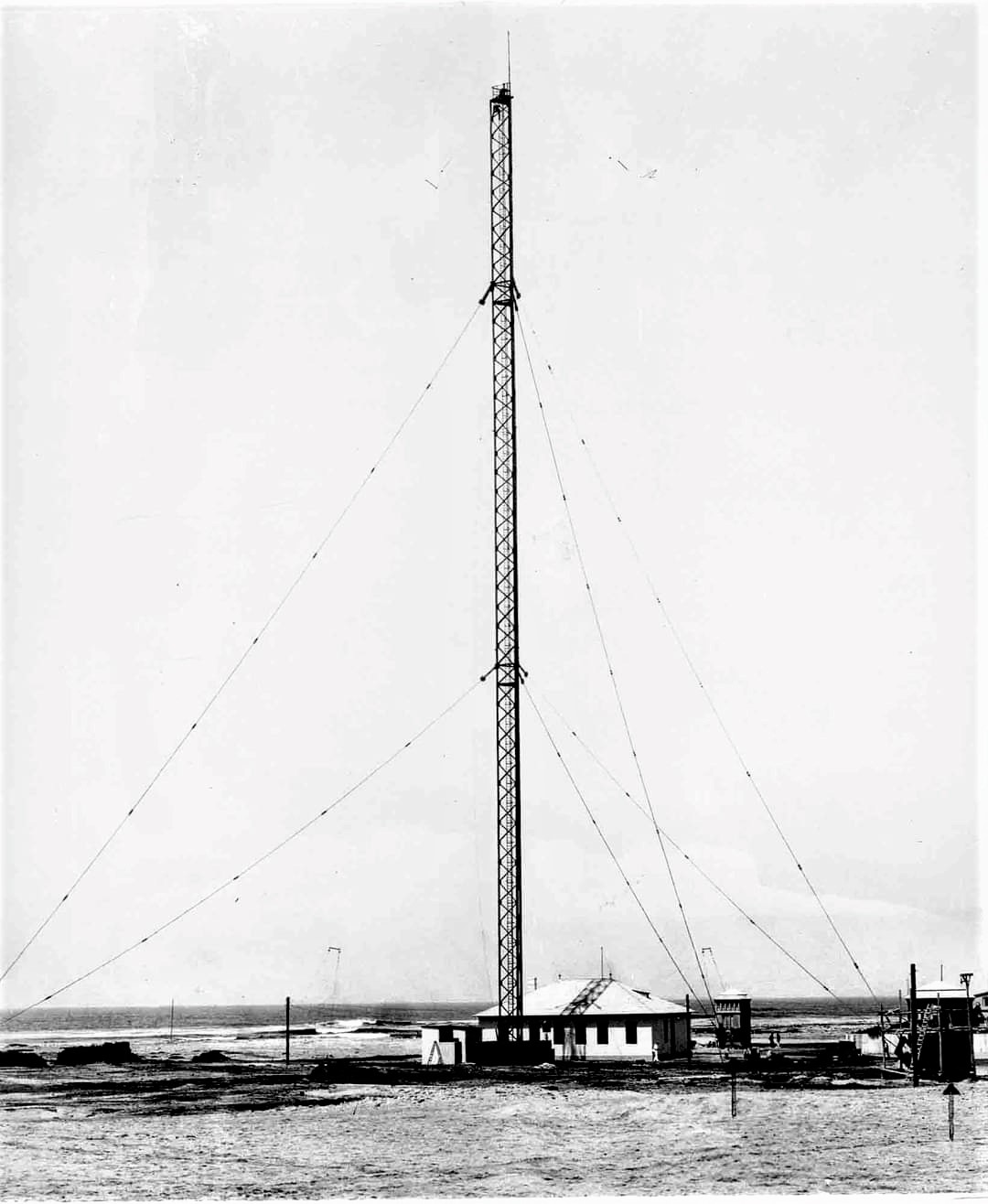 (now Lüderitz). The radio station
in Swakopmund was moved to Tsumeb during World War I, the station in
Lüderitzbucht was moved to Aus settlement.
(now Lüderitz). The radio station
in Swakopmund was moved to Tsumeb during World War I, the station in
Lüderitzbucht was moved to Aus settlement.
The radio stations were operated on a wave lengths ranging from 300 to 4500
meters corresponding to medium wave and longwave frequencies.
At that time,
short waves - higher frequencies above 3 MHz could not yet be created.
Therefore, the T-formed antennas of the radio stations were rather high; for
instance, the towers in Windhoek were 120 m tall.
The British government was well aware of the installation of the new German
radio system. On 24 December 1913, the British consul in Lüderitzbucht
reported to the Foreign Office:
"Sir, I have the honour to inform you that a wireless telegraphy station is in
course of erection in Windhuk.
The station is designed to establish direct
communication with Nauen in Germany and it is expected that the new service
will be in full working order by the 15th May 1914.
- British Consul in Lüderitzbucht
YouTube video of Swakop River made it into the Atlantic ocean in 2022:
The radio station in Swakopmund was inaugurated on 4 February 1912 but then
was dismantled on 13 August 1914 and moved to Tsumeb, where the station with
its 86-metre towers were operational on 24 November 1914.
The radio station in Lüderitzbucht went into operation on 3 June 1912; it was
dismantled on 8 August 1914 and moved to the small settlement of Aus, where it
became operational on 15 September. By 19 September, South African troops had
occupied the city of Lüderitzbucht.
ÑÒÀÐÛÅ ßÊÎÐÍÛÅ ÁÀØÍÈ Â ÃÎÐÎÄÅ ÑÂÀÊÎÏÌÓÍÄ, ÇÀÏÀÄÍÎÅ ÏÎÁÅÐÅÆÜÅ ÍÀÌÈÁÈÈ, ÐÅÃÈÎÍ ÝÐÎÍÃÎ.
ÈÍÔÎÐÌÀÖÈß: info@namibweb.com
Facebook:
NAMIBIA: https://www.facebook.com/groups/namibia.namibia
DRONESBERG AERIAL PHOTO/VIDEO: https://www.facebook.com/dronesberg
See a full list of Namibian coast shipwrecks.
Contact & information:
info@namibweb.com
Page created and serviced by

www.namibweb.com
Copyright © 1998-2025
namibweb.com - The online guide
to Namibia
All rights reserved |
JOIN
|
VIDEO PORTFOLIO
|
VIDEO/PHOTO COLLECTION
Telegram
| YouTube |
Blog
Page is sponsored by ETS &
Exploring Namibia TV
Disclaimer: no matter how often this page is updated and its accuracy is checked,
www.namibweb.com and ETS
will not be held
responsible for any change in opinion, information, facilities, services,
conditions, etc. offered by
establishment/operator/service/information provider or any third party
Description & images: Copyright © www.namibweb.com